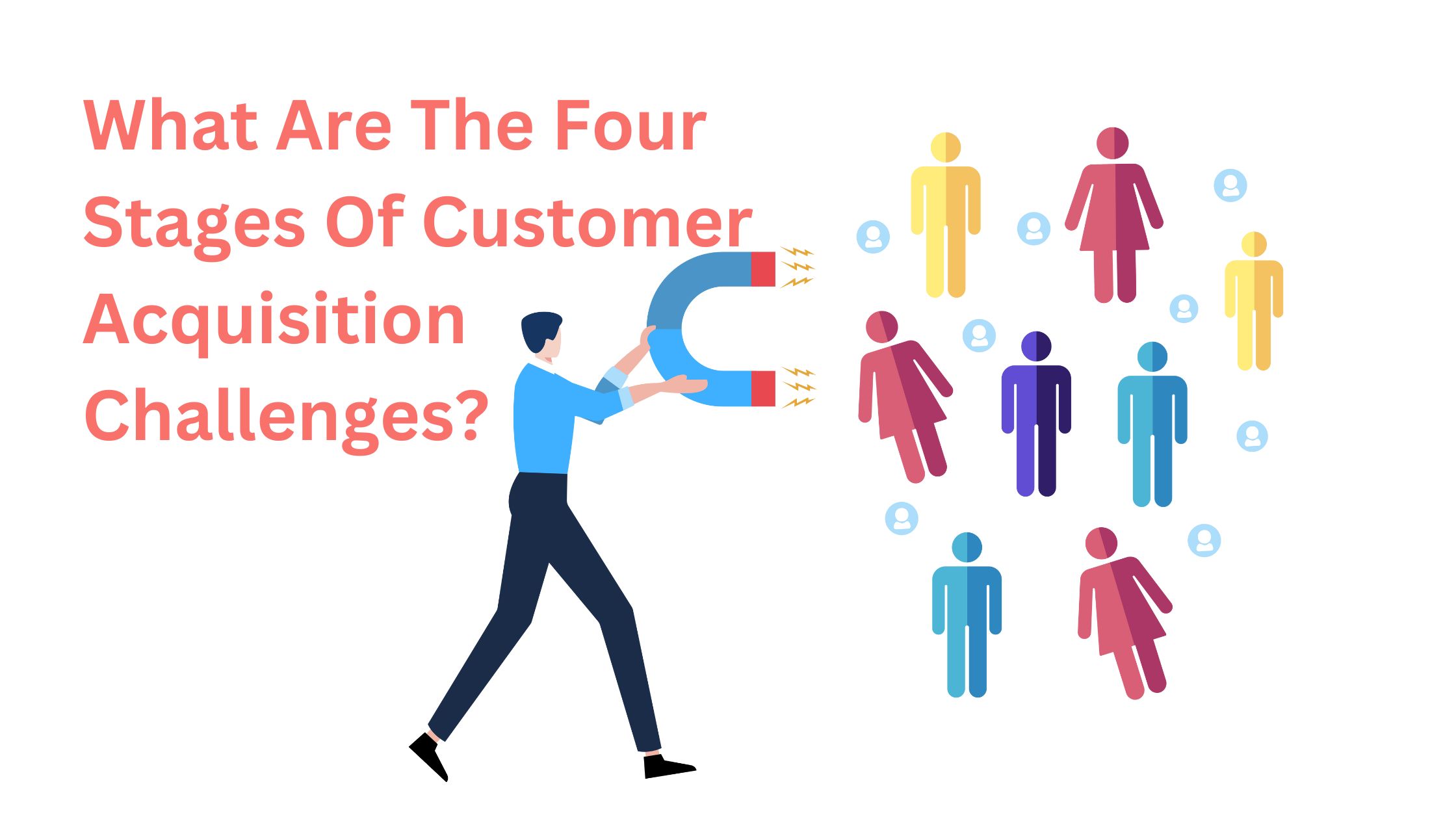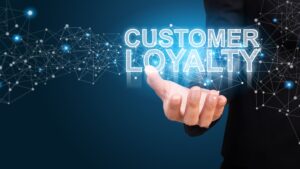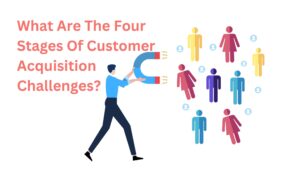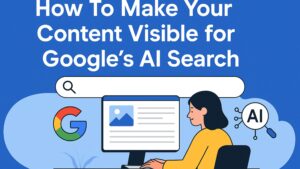Customer acquisition is the lifeblood of any business, yet it remains one of the most complex and resource-intensive undertakings. A well-structured customer acquisition roadmap enables organizations to align efforts across marketing, sales, and customer success functions while keeping the customer journey front and center. At its core, the customer acquisition funnel comprises four key stages: Awareness, Interest, Conversion, and Retention. Each stage has its own challenges and opportunities. To succeed, businesses must optimize and connect each part of the journey effectively.
Understanding Customer Acquisition
What is Customer Acquisition?
Customer acquisition is the process a business uses to gain new customers. It involves all the company’s methods and actions to attract potential buyers and turn them into paying customers. Think of it as a business’s steps to find and bring in people who haven’t bought from them before.
Significance of Customer Acquisition:
Customer acquisition is significant for a business for several reasons:
- Growth of the Business: New customers increase sales and help the Business grow. If a business doesn’t get new customers, it can’t grow.
- Keeping the Business Going: Customers sometimes stop buying from a business. Getting new customers helps make up for this and keeps the Business going in the long run.
- Getting More of the Market: When a business gets new customers, it often means it’s taking a bigger share of the people who might buy what it sells. This can make the Business a leader.
- Getting Known: When a business tries to get new customers, it often does things like marketing, which lets more people know about the Business and its name.
- Learning About Customers: Getting new customers helps a business know who its customers are, what they like, and how well its marketing is working. This will help the Business to do even better in the future.
Purpose of Customer Acquisition:
The main reasons a business tries to acquire new customers are:
- To Get More Customers: The most obvious reason is to have more people buy their products or services.
- To Make More Money: New customers spend money, which helps the Business earn more.
- To Build Long-Term Relationships: While the first step is to get a new customer, the goal is often to keep them happy so they buy repeatedly over many years. This makes them more valuable to the Business over time.
- To Reach Business Goals: Getting new customers often helps a business achieve bigger goals, like selling in new areas or launching new things to buy.
Customer acquisition is how a business grows and stays successful by constantly finding and bringing in new people who will buy what it offers.
What are The Four Stages of Customer Acquisition?
The four stages of customer acquisition are listed below.
Stage 1: Customer Awareness
What Is the Awareness Stage?
The awareness stage is where potential customers first learn about your brand.
Goal: To inform potential customers of your brand, products, or services. This is about reaching a broad audience and introducing them to your offering.
Challenges:
- Cutting Through the Noise:The digital world is full of information. It’s tough to stand out and get noticed amid all the content.
- Reaching the Right Audience: Just creating awareness is not enough; you need to target people who are likely to be interested in what you offer. A broad approach can be wasteful and expensive.
- Building Brand Recognition: Initial exposure needs to be memorable and contribute to building brand recognition and recall.
- Measuring Initial Impact: Tracking the effectiveness of early-stage awareness campaigns can be challenging.
Actionable Strategies, Tools, and Best Practices:
Content Marketing: Create valuable, informative, and engaging content (blog posts, articles, videos, infographics) that addresses your target audience’s pain points and interests.
Tools: Blog platforms (WordPress, Medium), video hosting (YouTube, Vimeo), content creation tools (Canva, Adobe Creative Suite).
Best Practices: SEO optimization, consistent publishing schedule, content promotion across multiple channels.
Social Media Marketing: Create a strong presence on the social media platforms that are important to you.Share interesting content and interact with your audience.
Tools: Social media management platforms (Hootsuite, Buffer), analytics tools (platform-specific analytics, Google Analytics).
Best Practices: Platform-specific content strategies, active engagement, targeted advertising.
Search Engine Optimization (SEO):Improve your website and content to rank better for important keywords in search engines.
Tools: SEO analysis tools (SEMrush, Ahrefs), keyword research tools (Google Keyword Planner).
Best Practices: On-page optimization, off-page link building, technical SEO.
Public Relations (PR) and Media Outreach: To increase your brand’s visibility and trust, get media coverage and build relationships with journalists and influencers.
Tools: Use PR distribution services and media monitoring tools to help you.
Best Practices: Focus on writing engaging press releases and reaching out to the right people.
Paid Advertising (Brand Awareness Campaigns)Use paid ads on search engines and social media to reach more people.
Tools: Google Ads, social media advertising platforms (Facebook Ads Manager, LinkedIn Campaign Manager).
Best Practices: Targeted audience segmentation, compelling ad creatives, A/B testing.
Stage 2:Consideration
Building Trust and Demonstrating Value
What Is the Consideration Stage?
In the consideration stage, prospects are no longer just curious—they’re actively comparing solutions. They understand their problem and are researching the best way to solve it. This is your opportunity to position your offering as the ideal choice.
Goal:
To build credibility, educate prospects, and guide them toward selecting your solution over alternatives.
Challenges:
Standing Out in a Crowded Market:To stand out in a crowded market, make your brand different from your competitors. Your customers have many choices, so it’s important to highlight what makes you unique.
Providing the Right Information: If you give too little detail, you might lose potential customers. But if you share too much, they could feel overwhelmed. It’s important to find the right amount of information.
Addressing Objections and Concerns: You need to answer questions about price, features, integration, support, and results clearly and convincingly.
- Establishing Trust: Since prospects may not have previous experience with your product, they need reassurance that your offering is trustworthy and effective.
Actionable Strategies, Tools, and Best Practices:
1. Product Comparisons & Buyer’s Guides
Offer detailed comparisons between your solution and alternatives, highlighting unique benefits and use cases.
- Tools: Content management systems (WordPress, HubSpot CMS), PDF builders, design platforms (Canva, Adobe InDesign).
- Best Practices: Stay objective, be transparent about limitations, and use clear visuals or tables for easy scanning.
2. Case Studies and Testimonials
Show real-world results from satisfied customers to reinforce credibility and demonstrate effectiveness.
Tools: Use video editing software like Loom or Descript. Use review platforms such as Trustpilot or G2, and include testimonial widgets.
- Best Practices: Share metrics and customer quotes. Show before-and-after examples and relate them to the industry to build credibility and enhance effectiveness.
3. Explainer Videos and Product Demos
Utilize visual storytelling to simplify complex solutions and help prospects visualize how your offering seamlessly integrates into their workflow.
- Tools: Video platforms (Vidyard, Wistia, YouTube), screen recording tools (Loom, Camtasia).
- Best Practices: Keep videos concise (2–5 minutes), focus on key pain points, and include clear call-to-actions (CTAs).
4. Retargeting Ads
Re-engage site visitors who didn’t convert during the interest stage with tailored ads highlighting benefits and social proof.
- Tools: Google Ads, Facebook Ads Manager, LinkedIn Ads, retargeting tools (AdRoll, Criteo).
- Best Practices: Utilize dynamic content, frequency capping, and targeted advertising based on user behavior.
5. Comparison Checklists & Interactive Tools
Let users explore key features or get personalized recommendations through interactive checklists and comparison charts.
- Tools: No-code platforms (Outgrow, Typeform), web calculators, decision tree tools.
- Best Practices: Align questions and comparisons with pain points and provide tailored results or insights.
6. Email Nurture Sequences
Send a series of automated, value-packed emails to address questions, educate, and build a relationship over time.
- Tools: Email automation tools (Mailchimp, ActiveCampaign, ConvertKit).
- Best Practices: Use drip campaigns, behavioral triggers, and progressive content that builds trust.
7. Social Proof & Endorsements
Reinforce credibility through influencer mentions, awards, media coverage, or well-known customer logos.
- Tools: PR platforms, influencer tools (BuzzSumo, Upfluence), and social media listening tools.
- Best Practices: Feature logos, quote experts, and link to third-party content or validations.
Stage 3:Conversion
Turning Interest into Action
What Is the Conversion Stage?
This is the stage where prospects are ready to take action—signing up, making a purchase, or scheduling a call. It’s the bridge between engagement and revenue.
Goal: To convert interested leads into paying customers. This is where the focus shifts to demonstrating value and making the purchase process seamless.
Challenges:
- Overcoming Objections: Potential customers may have doubts or concerns about your product, service, or pricing.
- Building Trust and Credibility: Building trust and demonstrating reliability is crucial for new businesses.
- Simplifying the Purchase Process: A confusing purchase process can cause customers to abandon their carts and result in lost sales.
- Providing Adequate Information: Prospects need all the necessary information to make an informed purchasing decision.
Actionable Strategies, Tools, and Best Practices:
Compelling Sales Pages and Product Pages: Create clear, concise, and persuasive landing pages and product pages that highlight benefits, features, and social proof.
Tools: Landing page builders (Leadpages, Unbounce), website platforms (Shopify, WooCommerce).
Best Practices: Clear value proposition, high-quality visuals, strong calls to action, easy navigation.
Customer Testimonials and Reviews: Showcase positive feedback from existing customers to build trust and credibility.
Tools: Review platforms (Google My Business, Yelp), testimonial management tools.
Best Practices: Authentic reviews, prominent placement, diverse perspectives.
Free Trials and Demonstrations: Allow potential customers to experience the value of your product or service firsthand.
Tools: Subscription management platforms, demo scheduling tools.
Best Practices: Easy sign-up process, clear value during the trial, effective onboarding.
Personalized Sales Outreach (for high-value leads): For qualified leads, personalized outreach from sales representatives can address specific needs and concerns.
Tools: CRM systems (Salesforce, HubSpot CRM), sales automation tools.
Best Practices: Thorough research, tailored messaging, active listening.
Streamlined Checkout Process: Make purchasing as intuitive and straightforward as possible, minimizing steps and offering multiple payment options—
Tools: E-commerce platforms (Shopify, WooCommerce), payment gateways (Stripe, PayPal).
Best Practices: Clear pricing, transparent shipping costs, secure payment options, guest checkout.
Money-Back Guarantees and Return Policies: Reduce risk for potential customers by offering guarantees or flexible return policies.
Best Practices: Clear and easy-to-understand policies, prominent display.
Stage 4: Retention
Cultivating Loyalty and Repeat Business
What Is the Retention Stage?
Customer acquisition doesn’t stop at the sale. The retention stage ensures customers stay, engage, and advocate for your brand, boosting CLV and reducing churn.
Goal: To keep existing customers engaged, satisfied, and returning for more. Retaining customers is often more cost-effective than acquiring new ones.
Challenges:
Maintaining Engagement: Keeping customers interested and connected with your brand over time.
Preventing Churn: Understanding why customers leave and implementing strategies to reduce churn.
Building Loyalty: Turning satisfied customers into loyal advocates for your brand.
Encouraging Repeat Purchases: Motivating existing customers to buy again and explore other offerings.
Actionable Strategies, Tools, and Best Practices:
Excellent Customer Service: Provide prompt, helpful, and personalized support to address customer needs and resolve issues effectively.
Tools: Customer support platforms (Zendesk, Intercom), knowledge base software.
Best Practices: Empathetic communication, timely responses, proactive support.
Loyalty Programs: Reward repeat customers exclusive benefits, discounts, or early access to new products.
Tools: Loyalty program platforms (Smile.io, Yotpo).
Best Practices: Tiered rewards, easy participation, valuable incentives.
Personalized Communication (Post-Purchase): Continue to engage customers with relevant content, offers, and updates based on their past purchases and preferences.
Tools: CRM systems and email marketing platforms with segmentation capabilities.
Best Practices: Personalized emails, targeted offers, valuable content.
Feedback Collection and Action: Actively solicit customer feedback through surveys, reviews, and direct communication, and use it to improve.
conclusion
A successful customer acquisition strategy doesn’t just attract leads—it converts them into long-term advocates. You can create a well-oiled, scalable growth engine by mastering each stage of the journey—awareness, interest, conversion, and retention.







